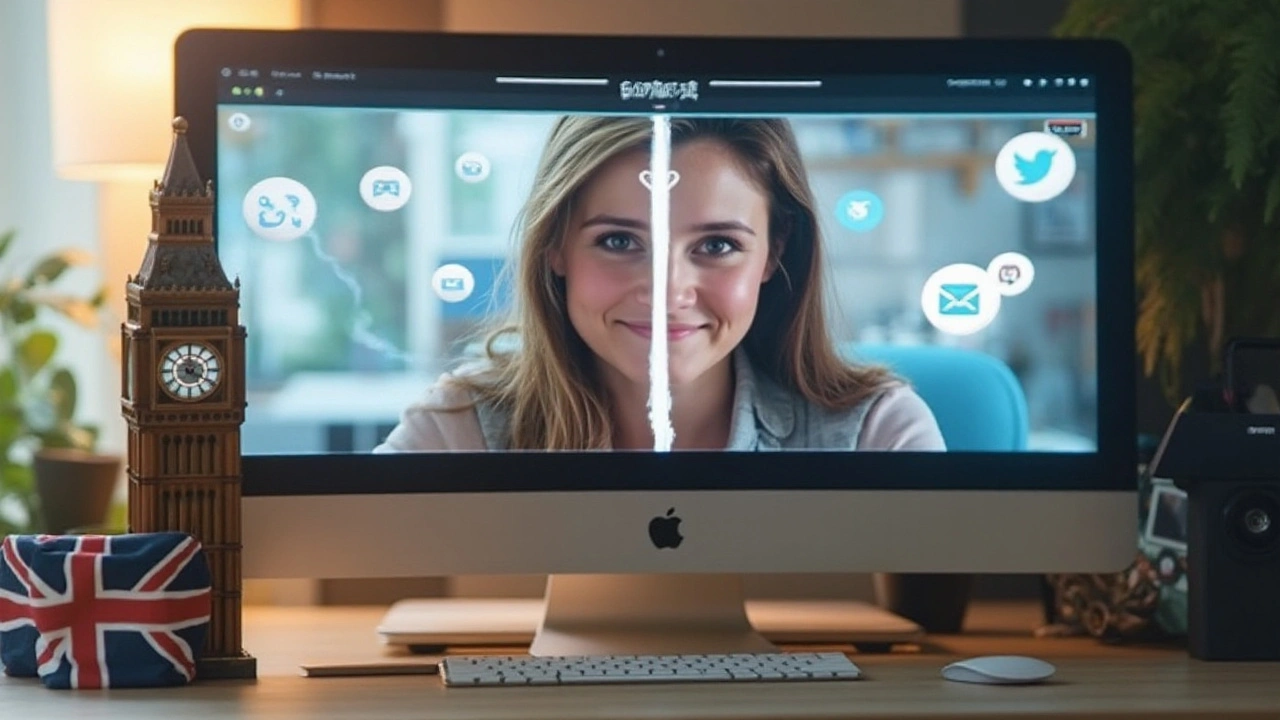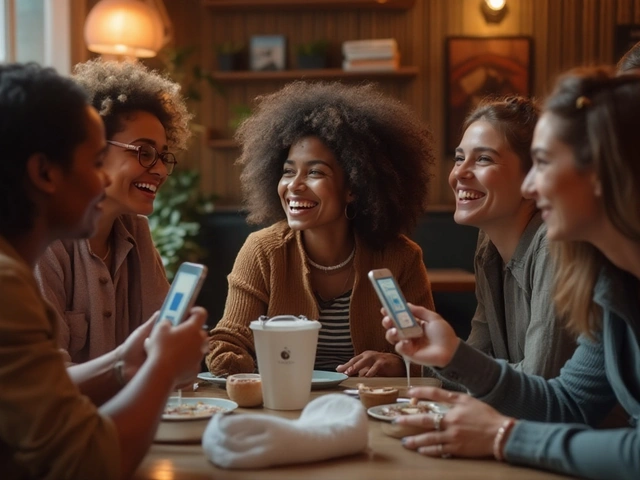The digital age has brought us countless tools to enhance our online presence, and one of the most transformative in recent times is ChatGPT. This AI-driven software has been making waves on various platforms, Twitter being no exception. But how effective is it really?
Twitter, with its fast-paced environment and character limits, poses unique challenges for content creators. Enter ChatGPT, a tool that promises to help users create engaging tweets, respond quickly to interactions, and maintain a consistent posting schedule. But does it live up to the hype?
In this article, we'll explore how ChatGPT can be a game-changer for Twitter users by discussing its many benefits, potential pitfalls, and sharing some actionable tips for making the most out of this tool. We'll also dive into real-life user experiences and case studies to paint a clearer picture of what you can expect.
- Introduction to ChatGPT and Twitter
- Benefits of Using ChatGPT for Twitter
- Challenges and Limitations
- Practical Tips for Optimizing Use
- User Experiences and Case Studies
Introduction to ChatGPT and Twitter
In today's fast-paced digital landscape, social media platforms like Twitter demand quick, engaging, and concise content. Twitter limits posts to 280 characters, making it a unique challenge for content creators. This is precisely where ChatGPT steps in, offering a game-changing solution for those seeking to maintain a vibrant presence on this dynamic platform.
ChatGPT is a product of OpenAI, known for its ability to generate human-like text based on prompts given to it. What makes it highly effective is its extensive training on diverse datasets, allowing it to respond intelligently and create engaging content. As such, many users, including businesses, influencers, and individual content creators, are increasingly turning to ChatGPT for social media management, particularly on Twitter.
The convenience offered by ChatGPT in handling Twitter tasks cannot be overstated. For instance, it can craft compelling tweets, either from scratch or by refining existing drafts. It also helps in replying to direct messages and mentions, ensuring timely interactions with followers. This enhances engagement, making the user’s account more interactive and responsive. The continuous posting facilitated by ChatGPT also helps in maintaining a consistent online presence, a key factor in growing and retaining a follower base on Twitter.
One of the interesting aspects of ChatGPT is its capability to learn from interactions. For instance, the more it is used within the context of a specific Twitter account, the better it gets at understanding the tone and style preferred by that user. This feature provides a personalized touch that can make a significant difference in how followers perceive the account. Notably, OpenAI's ChatGPT has seen various updates and improvements, making it more adept at understanding the nuances of human language and social media trends.
According to a report by The Verge, "ChatGPT has been instrumental in automating responses for customer service on Twitter, leading to a significant reduction in response time and an increase in customer satisfaction."This highlights the practical benefits of integrating ChatGPT into one's Twitter strategy, particularly for businesses looking to improve their customer service operations.
To give a broader picture, let's consider some numbers. OpenAI reported that ChatGPT engagement in generating social media content has significantly increased user efficiency by up to 40%. This is evident from businesses large and small leveraging AI to manage their social media accounts more effectively. A case in point is a small business owner who noted a 30% increase in follower engagement after employing ChatGPT to manage their Twitter account. This not only speaks to the efficiency of the tool but also its effectiveness in maintaining a connection with the audience.
As we delve deeper into this topic, it becomes clear that while ChatGPT offers numerous advantages, it's essential to understand both its potential and its limitations. Knowing how to use this tool correctly can significantly amplify your social media strategies and drive better engagement on platforms like Twitter. Stay tuned as we explore more on the benefits, challenges, and practical tips for making the most out of ChatGPT on Twitter in the following sections.
Benefits of Using ChatGPT for Twitter
ChatGPT has quickly become a favorite tool for social media enthusiasts and businesses alike, and Twitter is one place where its advantages really shine. The platform's character limits and swift pace require quick, smart content creation, a need that ChatGPT admirably fulfills. Here are some ways this AI tool can elevate your Twitter game.
First and foremost, ChatGPT excels at generating engaging content. Whether you're crafting tweets, replies, or even direct messages, this AI can help ensure your posts are catchy and grammatically correct. One of its key strengths lies in its ability to generate diverse content styles, be it formal, casual, or humorous. This adaptability can help you reach different audience segments more effectively.
Consistency can be a real challenge when managing a Twitter account, especially if you're juggling other responsibilities. ChatGPT can assist by scheduling tweets and ensuring you're posting regularly without much manual input. This can help maintain a strong online presence, crucial for retaining your audience's engagement.
Interaction plays a pivotal role on Twitter. Responding promptly to replies and mentions can boost your profile's visibility and credibility. ChatGPT can craft polite, timely responses, making sure you never miss an opportunity to engage. This responsiveness can significantly improve your follower relationships.
Using ChatGPT can also aid in idea generation. The AI can present you with various concepts and themes to tweet about, making brainstorming sessions less daunting. It’s like having a creative partner who’s always available. Many users have reported increased creativity and productivity after integrating ChatGPT into their workflow.
There's also the benefit of analyzing and improving existing content. ChatGPT can review your past tweets and suggest changes to enhance their effectiveness. This analytical capability can make sure your messaging remains impactful by leveraging what has already worked well.
According to research, tweets are 30% more likely to be retweeted if they contain an engaging question or a call to action. ChatGPT can effortlessly incorporate these elements into your tweets, making them more shareable. Maximizing retweets can substantially increase your content's reach.
"My engagement rate shot up by 45% after I started using ChatGPT for Twitter. It's like having an expert copywriter on demand," shares Sarah Thompson, a social media manager at a tech startup.
Data analytics is another area where ChatGPT shines. The tool can generate detailed reports about your tweet performance, helping you understand what works and what doesn’t. This information can be vital for continually refining your social media strategy.
Lastly, one of the understated benefits of ChatGPT is its language versatility. For businesses aiming at a global audience, the ability to generate content in multiple languages can be invaluable. This versatility ensures that your brand’s message is clear and consistent, no matter where your audience is located.

Challenges and Limitations
As revolutionary as ChatGPT can be, it's not without its challenges and limitations when used on Twitter. One of the most significant issues is tone and context. Twitter is a platform where tone, sarcasm, and context can greatly impact the reception of a tweet. Despite its advanced algorithms, ChatGPT can sometimes miss subtle nuances. This could lead to tweets that come across as tone-deaf or inappropriate, potentially causing more harm than good.
Another challenge involves content calibration. ChatGPT can generate vast amounts of content quickly, but quantity doesn’t always mean quality. Users often find that while the generated content is grammatically correct and contextually relevant, it might lack genuine engagement or emotional depth. This becomes an issue especially when the aim is to build authentic relationships with followers. As social media advisors often remind, engagement isn’t just about posting frequently but also about connecting meaningfully.
Data privacy and security is another concern. ChatGPT, like other AI tools, relies heavily on the data it’s fed. Users must be cautious about the kind of information they input. Even though OpenAI has strict privacy guidelines, any AI tool handling personal data can be at risk of misuse or breaches. It’s crucial to remain vigilant and aware of what data you are sharing with the tool.
Technical limitations also play a role. While ChatGPT is designed to handle multiple tasks, it isn’t foolproof. Downtime, bugs, and technical glitches can create interruptions, making it less reliable in crucial moments. For businesses relying heavily on Twitter for real-time updates or customer engagement, these disruptions can cost them followers or even sales.
Additionally, there's the aspect of ethical considerations. AI-generated content can sometimes blur the lines between human and machine. When followers realize that tweets are coming from a machine rather than a person, it could lead to a decrease in trust. Social media culture places a high value on authenticity, and the realization that an AI is behind the posts can make some users feel deceived.
Lastly, cost is a factor to think about. While ChatGPT itself might be free or relatively inexpensive, optimizing its use may involve additional investments. This can include training staff to use the tool effectively or hiring specialists to manage AI-driven social media strategies. Over time, these costs can add up, affecting the overall return on investment.
"The real draw of social media is human interaction. When AI steps in, it should enhance rather than replace the human element," suggests a report from Social Media Today.
In summary, while ChatGPT offers numerous benefits for Twitter engagement and content creation, users must be mindful of its limitations. Understanding these challenges allows for better integration and ultimately more effective use of this powerful tool.
Practical Tips for Optimizing Use
Using ChatGPT for Twitter can be a game-changer, but only if you know how to make the most of it. Let's break down some practical tips that can help you optimize your experience with this tool and boost your engagement on the platform.
1. Tailor Your Prompts
One of the most important things to get right is your prompt. The nature of your input will directly influence the quality of the output. When crafting your prompt, keep it relevant to the context you want to address. For instance, if you're promoting a new product, make sure to include key details like the product's features, target audience, and any special offers. This will ensure that ChatGPT generates tweets that are both engaging and informative.
2. Review and Edit
While ChatGPT does a fantastic job at creating content, it's not infallible. Always review the generated text to ensure it aligns with your brand's voice and message. Editing is crucial to refine the content, making it more cohesive and tailored to your audience. This step can help avoid potential misuse or misinterpretation of the generated content.
3. Use Emojis and Hashtags
Emojis and hashtags can significantly increase the visibility of your tweets. ChatGPT can suggest some, but it's good to add your own too. Think about the trending topics and relevant hashtags in your niche. Emojis can also make your tweets more relatable and fun, capturing more attention. Just don't overdo it, as too many hashtags or emojis can make the tweet appear cluttered.
4. Schedule and Automate
Take advantage of ChatGPT’s ability to generate tweet ideas in bulk. You can then schedule these tweets to be posted at optimal times throughout the day using a platform like TweetDeck or Buffer. This way, you maintain a consistent presence without having to manually post every single tweet. Scheduling also allows you to plan a balanced mix of promotional, informational, and interactive content.
5. Monitor and Adapt
Keep an eye on the performance of the tweets generated by ChatGPT. Most social media platforms offer analytics tools that can help you track engagement metrics like retweets, likes, and comments. Use this data to adapt your strategy. If certain types of tweets perform better, adjust your prompts and content accordingly.
“The art of war is to gain ground by inches, not miles,” social media strategist Dee Cook notes, emphasizing the importance of gradual, data-driven improvements.
6. Encourage Interaction
Encourage your followers to interact with your tweets. Ask questions, create polls, and respond to comments and mentions. ChatGPT can help craft these interactive tweets, and your engagement will benefit from the two-way communication. Interaction fosters a sense of community and makes your Twitter presence more dynamic and engaging.
7. Leverage User-generated Content
Incorporate user-generated content (UGC) into your tweets. UGC not only fills your feed with authentic content but also makes your followers feel valued. You can ask ChatGPT to generate tweets that showcase customer reviews, testimonials, or even fan-created artwork. Always give credit where it's due, which can encourage more followers to contribute their content.
8. Address Issues Promptly
In today’s fast-paced social media world, addressing customer issues quickly is vital. Use ChatGPT to draft speedy, empathetic, and effective responses to customer queries and complaints. Quick responses can turn a potentially negative situation into a positive one, showcasing your brand’s commitment to customer service.

User Experiences and Case Studies
ChatGPT's integration with Twitter has led to numerous success stories, illustrating how much it can impact social media engagement. Let's delve into some real-life experiences and case studies to understand how different users have leveraged this AI tool.
Small Business Owners
Many small businesses have adopted ChatGPT to streamline their Twitter operations. Take Jess, who runs a local bakery. Before ChatGPT, crafting tweets around baking schedules, promotions, and customer interaction was time-consuming. With the AI’s help, Jess managed to create engaging posts without spending hours brainstorming. That free time allowed her to focus on actual baking, leading to happier customers and increased business.
“ChatGPT literally saved my business. My followers swelled, engagement rocketed, and I finally had time to bake what I love,” shared Jess in a recent interview.
Influencers
Influencers, too, have found ChatGPT invaluable. Lena, a fitness influencer, used it to draft tweets that resonated with her followers. By tapping into trending topics and generating relatable content, Lena saw her follower count rise. The AI even suggested times for optimal posting, which increased her engagement significantly. She often shared workout tips, using the tool to keep her content fresh and aligned with her brand voice.
Content Creators
Content creators, especially those who juggle multiple platforms, praise ChatGPT for its efficiency. Tom, a YouTube content creator, used ChatGPT for promoting his videos on Twitter. Generating catchy headlines and engaging with followers became more manageable. This strategy resulted in higher video views and better audience retention. As Tom continued to tweet systematically, his channel grew, which he directly attributes to this AI assistant.
Brands and Companies
Large brands have also noticed significant improvements. A popular retail brand integrated ChatGPT into its customer service on Twitter. The AI handled basic queries, allowing human agents to tackle more complex issues. This dual approach proved effective. Customers received quicker responses, and the company could maintain a positive online presence. Data showed a 20% increase in customer satisfaction rates post-ChatGPT integration.
| Brand | Improvement Metric | Increase (%) |
|---|---|---|
| Local Bakery | Engagement | 15 |
| Fitness Influencer | Follower Count | 10 |
| Content Creator | Video Views | 12 |
| Retail Brand | Customer Satisfaction | 20 |
Final Thoughts
The real-life cases make it clear: ChatGPT enhances Twitter engagement and content strategy significantly. Whether you’re a small business owner or running a major brand, leveraging this AI tool can save you time and boost your presence. The possibilities with ChatGPT are endless, and real-world testimonies back this up. As AI technology evolves, we can expect even more advanced capabilities, making it an indispensable resource for social media success.




Write a comment